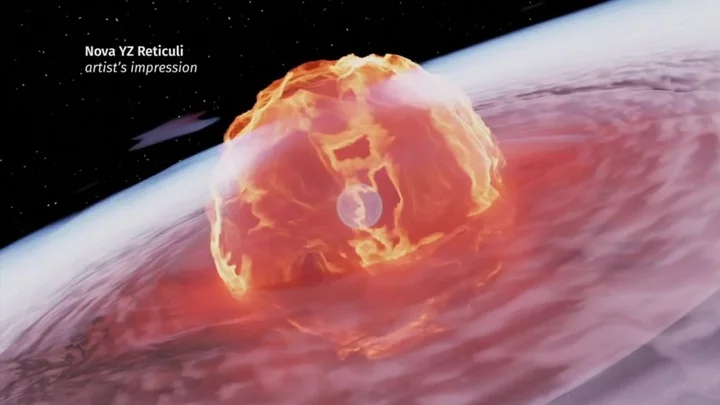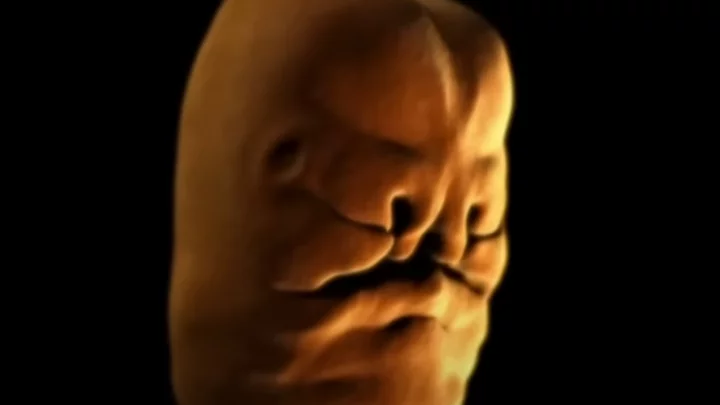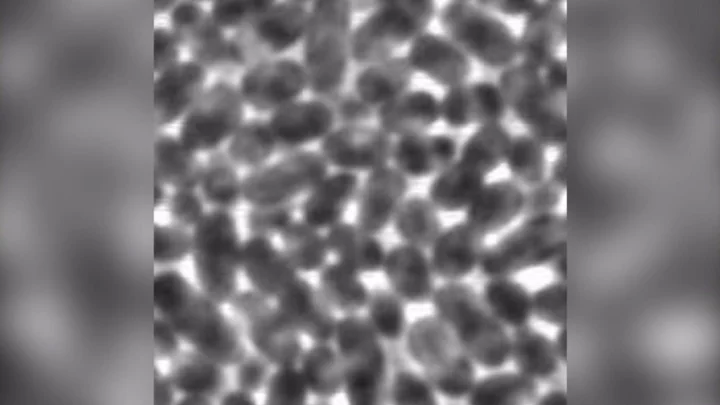
How Seeding the Oceans With Minerals Could Grab Carbon From the Atmosphere
The Hajar Mountains reach nearly 10,000 feet above sea level, tracing the coastline of Oman and the United
2023-09-28 19:25

European Insurers Are Underwriting 30% of US Coal: Study
Some of Europe’s biggest insurers are underwriting close to a third of the coal production that takes place
2023-09-28 19:16

ECB looks to AI to better understand inflation after big misses
FRANKFURT The European Central Bank is looking at how artificial intelligence could help improve its understanding of inflation
2023-09-28 18:58

Time-lapse that took 20 years to make shows legendary stellar explosion
Scientists have spent 20 years putting together time-lapse footage offering a stunning window into the past. Two decades of data taken from NASA’s Chandra X-ray Observatory were used by astronomers to create a video of a stellar eruption that actually occurred 180 years ago. Observations from Chandra, taken in 1999, 2003, 2009, 2014 and 2020 were all used, in combination with data from ESA’s XMM-Newton spacecraft. With the combined data, experts were able to capture the stellar explosion, known as Eta Carinae. Eta Carinae is a famous star system containing two large stars, one of which is around 90 times larger than the Sun, while the other is around 30 times as large. The “Great Eruption” from Eta Carinae is believed to be the result of the merging of two stars that were originally part of a three-star system. Eta Carinae Time-Lapse, Chandra X-ray Observatory www.youtube.com It first took place in the mid-19th century and the aftermath is still continuing to be observed today. New footage shows how the explosion has expanded into space with staggering speeds of up to 4.5 million miles per hour. In a statement, NASA officials explained: “During this event, Eta Carinae ejected between 10 and 45 times the mass of the sun. This material became a dense pair of spherical clouds of gas, now called the Homunculus Nebula, on opposite sides of the two stars.” The Homunculus Nebula is the blue cloud visible in the video, while the growing bright orange ring shows how X-ray emissions have grown and expanded over time. “The new movie of Chandra, plus a deep, summed image generated by adding the data together, reveal important hints about Eta Carinae’s volatile history,” the statement read. “This includes the rapid expansion of the ring, and a previously-unknown faint shell of X-rays outside it.” Sign up to our free Indy100 weekly newsletter Have your say in our news democracy. Click the upvote icon at the top of the page to help raise this article through the indy100 rankings.
2023-09-28 18:52

Video showing how babies' faces form is giving people nightmares
The human body is an extraordinary thing – and now, one video is proving just that, while simultaneously giving people nightmares. Childbirth is often regarded as one of nature's most incredible events, but have you ever questioned how a baby's face develops while in the womb? Neither have we. But thanks to the BBC, people are divided about how "beautiful" the process actually is. The simulation shows how the baby's face starts with the philtrum, the area between the bottom of your nose and upper lip. During the episode of Inside the Human Body: Creation, Michael Mosley points out: "Down the centuries, biologists have wondered why every face has this particular feature. What we now know is it is the place where the puzzle that is the human face finally all comes together." The footage then recreates a baby's facial development via an animation, which begins with two holes at the top of the head. It appears as though the features then start to merge, though this is the baby's nostrils. (Fast-forward 32 seconds in to the below video to watch:) Face Development in the Womb - Inside the Human Body: Creation - BBC One www.youtube.com "We've taken data from scans of a developing embryo so we're able to show you for the very first time how our faces don't just grow, but fit together like a puzzle," Mosley continues. "The three main sections of the puzzle meet in the middle of your top lip, creating the groove that is your philtrum." He continues: "This whole amazing process, the bits coming together to produce a recognisable human face, happens in the womb between two and three months. "If it doesn't happen then, it never will." The snippet understandably garnered a mixed response, with one viewer writing: "That was so creepy yet amazing..." Another joked: "Makes me feel better that Brad Pitt and Tom Cruise once looked like space aliens." And a third quipped: "Thank you for the enlightening information and the skin-curdling nightmares." Sign up for our free Indy100 weekly newsletter Have your say in our news democracy. Click the upvote icon at the top of the page to help raise this article through the indy100 rankings.
2023-09-28 18:21

Volkswagen restarts production after suffering major IT outage
By Christoph Steitz FRANKFURT (Reuters) -Volkswagen said on Thursday that a major IT outage, which had caused most of its
2023-09-28 17:16

People are just learning Google's original name – and thanking god that it was changed
A world without Google would almost be akin to a world without water or air. Indeed, the internet behemoth’s power is so great that it’s even become its own verb. And sure, there are other search engines, but when have you ever heard someone say: “Let me just Bing that”? Yet, it turns out the iconic tech company could have had a very different fate had it stuck to its original name. That’s right, Google hasn’t always been Google. And at its inception back in 1996, it had a somewhat more risqué title. It was called… BackRub. Yep, BackRub. According to Standford University computer scientist David Koller, who wrote about the brand’s genesis back in 2004, founders Larry Page and Sergey Brin came up with the search engine's first name as a nod to its analysis of the web’s “back links”. However, a year after BackRub was born, Page and his officemates – including fellow graduate students Sean Anderson, Tamara Munzner, and Lucas Pereira – discussed a number of possible alternatives to the massage-evoking moniker. According to Koller, the final, fateful brainstorming session occurred one day in September of that year. “Sean and Larry were in their office, using the whiteboard, trying to think up a good name - something that related to the indexing of an immense amount of data,” he recalled. “Sean verbally suggested the word ‘googolplex,’, and Larry responded verbally with the shortened form, ‘googol’ (both words refer to specific large numbers). “ Anderson then searched the Internet domain name registry database to see if the newly suggested name was still available to use. But, since “Sean is not an infallible speller”, “he made the mistake of searching for the name spelt as ‘google.com,’ which he found to be available,” Koller continued. “Larry liked the name, and within hours he took the step of registering the name ‘google.com’ for himself and Sergey.” And the rest, as they say, is history. Sill, 25 years on from that simple domain name registration that would go on to change the world, people have shared their bewilderment that “BackRub” could have become a household name. “I could die without knowing that this was Google's old name,” one X/Twitter user commented. “What were they smoking back in 90s??” asked another. Meanwhile, a third responded with what we’re all now thinking: “Tbh I need a backrub.” At least the tech titans can now give themselves a pat on the back for a job well done with “Google”. Sign up for our free Indy100 weekly newsletter Have your say in our news democracy. Click the upvote icon at the top of the page to help raise this article through the indy100 rankings.
2023-09-28 16:49

Sushi could secretly be spreading antibiotic resistance
Antibiotic-resistant bacteria are an increasing area of concern for health experts and scientists are concerned that the popular food sushi could be spreading it. Researchers at the Norwegian University of Science and Technology were interested in looking at the health implications of sushi, which is considered pretty standard fare in the country. Dr. Hyejeong Lee, who recently completed her PhD at the Department of Biotechnology and Food Science at NTNU, investigated different varieties of Aeromonas bacteria in seafood products that aren’t processed in a way that reduces bacteria, such as sashimi (raw fish) and cold-smoked fish. Lee explained: “The goal was to gain more knowledge about Aeromonas in this type of seafood – both the bacteria’s role in the deterioration of the product and in causing disease. Furthermore, we wanted to see if raw seafood can spread antibiotic-resistant bacteria.” While Listeria monocytogenes is the most well-known bacteria that can cause illness from unprocessed seafood, the prevalence of Aeromonas in similar products is an increasing worry for scientists for another reason. This is because Aeromonas bacteria frequently exchange genetic material with other bacteria in the sea, which means they can inherit and spread resistance to antibiotics before ending up in sushi. Lee explained: “Some strains of Aeromonas can also spread antibiotic resistance from one type of bacteria to another. Eating seafood infected by resistant bacteria is a likely way these bacteria can spread from marine animals and environments to humans.” Resistant bacteria are foreseen to be a big problem in the future, with the worst-case scenario being that few or no antibiotics will work at treating them. Experts believe it is important that antibiotic resistance is seen as a broad approach that is seriously considered in all aspects of society. Anita Nordeng Jakobsen, associate professor at NTNU’s Department of Biotechnology and Food Science, explained: “To combat the spread of antibiotic-resistant bacteria, it is important that we adopt a broad approach that looks at animal and human health, food production and the environment together in order to achieve better public health.” Still, Lee was quick to emphasise that the risk of getting sick from Aeromonas is very small, especially for healthy people. But, she stressed: “Aeromonas is often ignored when we talk about food safety. I think my research highlights that the food industry needs to pay more attention to these bacteria." Sign up to our free Indy100 weekly newsletter Have your say in our news democracy. Click the upvote icon at the top of the page to help raise this article through the indy100 rankings.
2023-09-28 16:22

One Investor’s Uphill Battle to Turn Rewilding Into a Multi-Billion Dollar Industry
On a remote peninsular of Scotland, there’s an experiment underway to put a dollar value on nature restoration
2023-09-28 13:26

In major blow to TikTok, Indonesia bans e-commerce transactions on social media
Indonesia has banned e-commerce transactions on social media platforms, the trade minister said on Wednesday, in a blow to short video app TikTok, which is doubling down on Southeast Asia's biggest economy to boost its e-commerce business.
2023-09-28 10:23

Biden teases forthcoming executive order on AI
The White House plans to introduce a highly anticipated executive order in the coming weeks dealing with artificial intelligence, President Joe Biden said Wednesday.
2023-09-28 07:52

PlayStation Boss Jim Ryan Is Retiring From Sony in March
Jim Ryan, chief executive officer of Sony Interactive Entertainment, is stepping down after almost 30 years with the
2023-09-28 07:52
